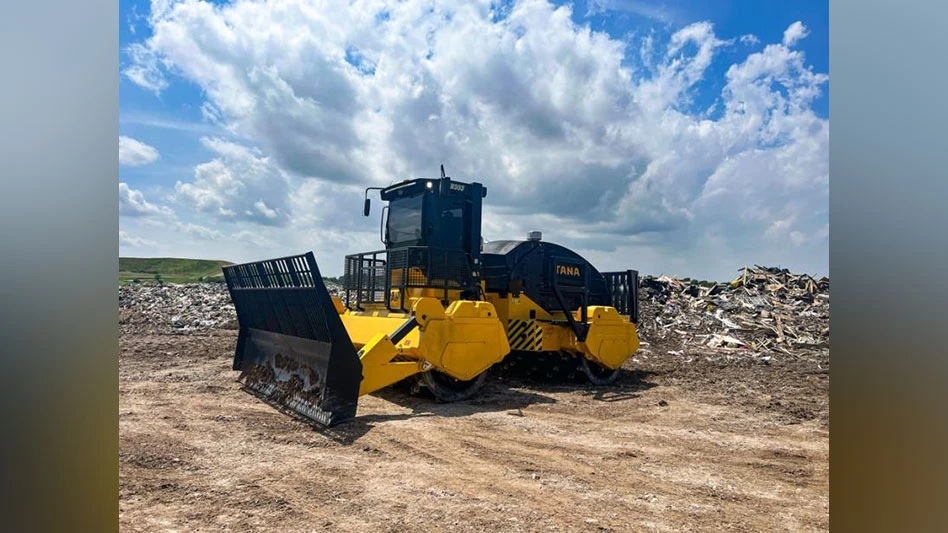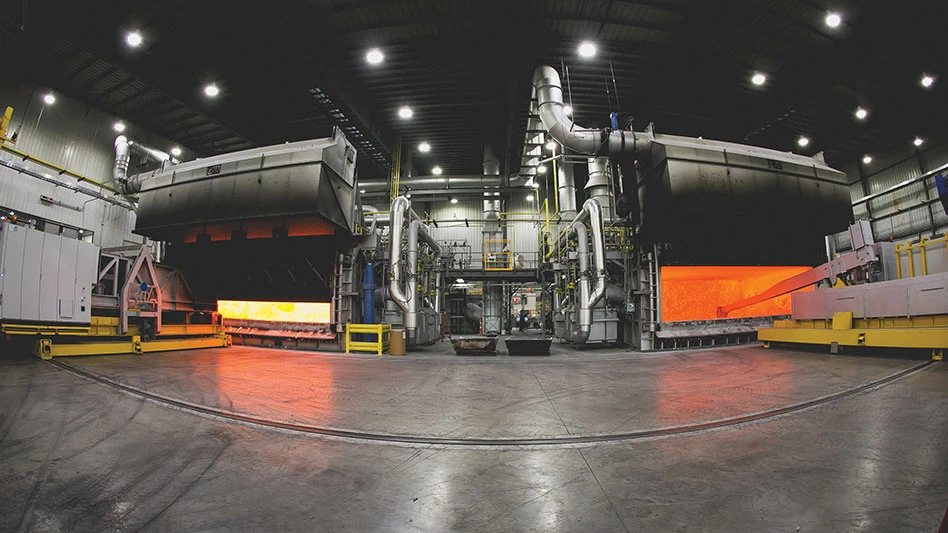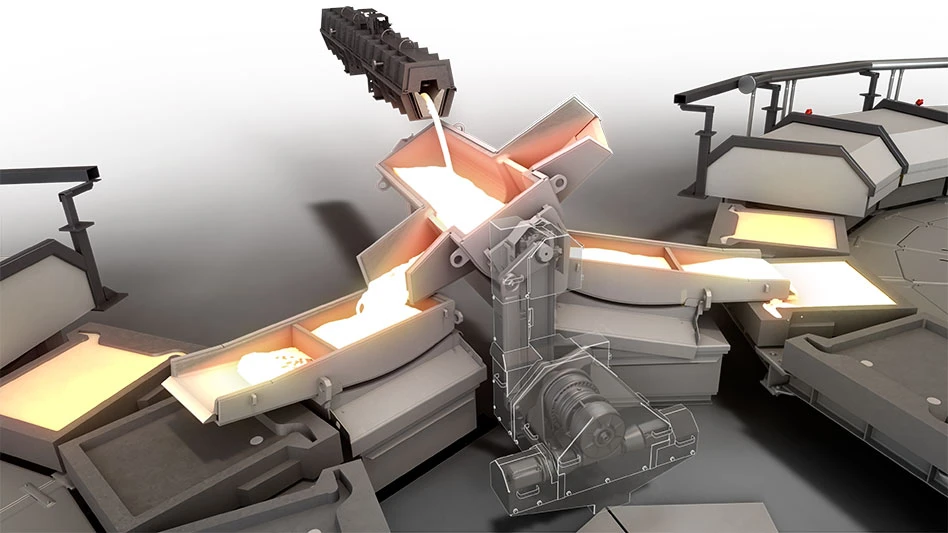Making decisions about buying equipment implicitly includes the question, whether we seriously address it or not, “Should we buy new or used?”
While the question should be addressed for all equipment, in the case of scrap handling equipment decisions sometimes may be affected by the kind of equipment and applications we’re considering. Those responsible for purchasing equipment for scrap operations are looking at a wide range of responsibilities, including:
•Material handling equipment-including cranes, loaders and fork lifts
•Processing equipment-including balers, shredders, wire choppers and shears
•Transportation equipment, including trucks and trailers.
As a result of our strategic acquisitions over the past five years, our company is in the unusual position of offering significant amounts of used equipment for sale as we eliminate redundancies in the course of consolidating our operations around the country. While used equipment from scrap processing facilities historically has carried the stigma of being old, worn out and poorly maintained, we have been taking strides to overcome this perception over the last several years because of our commitment to proper maintenance and good record-keeping. Because we are both buying and selling equipment, we have a rare perspective on the market.
Application Criteria
Overall, we have several criteria for making purchase decisions. The first determining factor always has been the requirements of the specific application. For example, if we are looking at a piece of equipment that will be feeding a high-volume continuous processing operation, we want equipment that is extremely reliable, no matter what.
Some of the specifics we look at include:
•Lifting capacity
•Reach
•Cycle times
•Attachments needed (grapples, magnets, clamshells, counterweights. We, by the way, always like to have grapples that also can pick up magnets).
Then we consider operating requirements:
•Mobility
•Continual, intermittent or reserve duty
•Training and maintenance
Also, we certainly look at all of the cost factors:
•Initial purchase price
•Financing charges
•Operation
•Maintenance
•Delivery (availability; moving and installation expense)
•Residual value at the end of the planned useful life for us. (We plan, for example, to replace new trucks after five years, which helps us forecast our capital needs).
Evaluating all these criteria helps us make the best “new” or “used’ decision.
|
The Auction Option |
|
The series of scrap industry mergers and acquisitions that took place in the 1990s-followed by a difficult ferrous scrap market-has created conditions ideal for large-scale equipment auctions. Two higher-profile auctions this spring allowed Philip Services Corp., Chicago, and OmniSource Corp., Fort Wayne, Ind., to auction off excess equipment, including material handling equipment. An auction in April in Hamilton, Ontario, Canada, featured a variety of equipment, including nonferrous shredding, chopping and separating equipment, as well as several types of conveyors and hydraulic alligator shears. OmniSource Corp. auctioned equipment it described as “assets surplus to [its] continuing operations.” The auction was held at one of the company’s Toledo, Ohio, locations in mid-June. It featured a wide variety of equipment, including balers, shears, scales, conveyors, mobile material handling equipment and attachments, and briquetting presses. A spokesperson from Corporate Assets Inc., Toronto, the firm conducting the auctions, says the company typically hears from numerous interested parties as the auction dates near. Auction formats can be different, but for the April Philip event, the “highest bid received the day of the auction was accepted,” said the Corporate Assets spokesperson. “We don’t have any predetermined amount” that was used as a floor, she indicated. -Brian Taylor |
Why Buy New?
Buying new, which is our usual policy, generally means:
•More choices are available, as to the basic machines and attachments.
•There is no need to worry about prior wear and tear or quality of maintenance.
•Maximum warranty protection is available, and from established, reputable dealers.
•Training and service are more readily available from people thoroughly familiar with the equipment.
•Delivery generally is prompt, under 120 days, except perhaps for processing equipment, for which delivery and installation could go out as much as a year.
Why Buy Used?
While our philosophy generally is to buy new, we do consider buying used if:
•Financially it is attractive
•The operating history shows low mileage or low hours
•Quick availability is a factor.
And, we like to go on-site to see used equipment we’re shopping for at work, particularly to see how similar its operating environment is to the one we are contemplating for it.
Standardization
Ultimately, all of our equipment purchases also are influenced by our desire to standardize, which makes both operator and maintenance training simpler and more efficient.
Material handling equipment has especially significant differences in design from one manufacturer to another. So we’ll buy from one or two manufacturers or maybe three. But we don’t want to put all of our eggs in one basket, either; so we try not to sole source any equipment purchases.
Standardization certainly reduces our repair parts inventory costs, too. We’d rather, for example, stock one spare engine that can go into many machines than a dozen different kinds of spares.
Terrain and Platforms
Terrain determines equipment choice, too, especially for material handling equipment. Rubber-tired machines are preferable because of their speed and mobility, though rough terrain may require crawlers; either is preferable to fixed-platform machines that can’t be moved out of the way if they go down.
This is particularly critical, again, for feeding continuous processes such as baling or shredding or for critical loading facilities.
Cable cranes represent a huge investment and so are more likely to be bought used than other material handlers. But they require significantly more maintenance and more highly trained and skillful operators.
A lot of pedestal-mounted cranes still can be seen in scrap yards, but we have yet to see one that makes a lot of sense. Their only advantage, and a minor one at that, is that the energy cost to run them is low. But if the processing equipment they are feeding goes down, pedestal-mounted machines cannot do anything beyond their reach. But crawler cranes or rubber-tired machines can be moved to other places where they can be productive.
We do shop the used equipment market aggressively to fill specific needs with equipment that will meet our requirements. In the final analysis, we take into account the net present value of the dollars involved and the return we can expect based on all of these criteria.
The author is president of the Midwest Division of Metal Management Inc., Chicago.
Get curated news on YOUR industry.
Enter your email to receive our newsletters.

Explore the June 2001 Issue
Check out more from this issue and find your next story to read.
Latest from Recycling Today
- Fenix Parts acquires Assured Auto Parts
- PTR appoints new VP of independent hauler sales
- Updated: Grede to close Alabama foundry
- Leadpoint VP of recycling retires
- Study looks at potential impact of chemical recycling on global plastic pollution
- Foreign Pollution Fee Act addresses unfair trade practices of nonmarket economies
- GFL opens new MRF in Edmonton, Alberta
- MTM Critical Metals secures supply agreement with Dynamic Lifecycle Innovations





